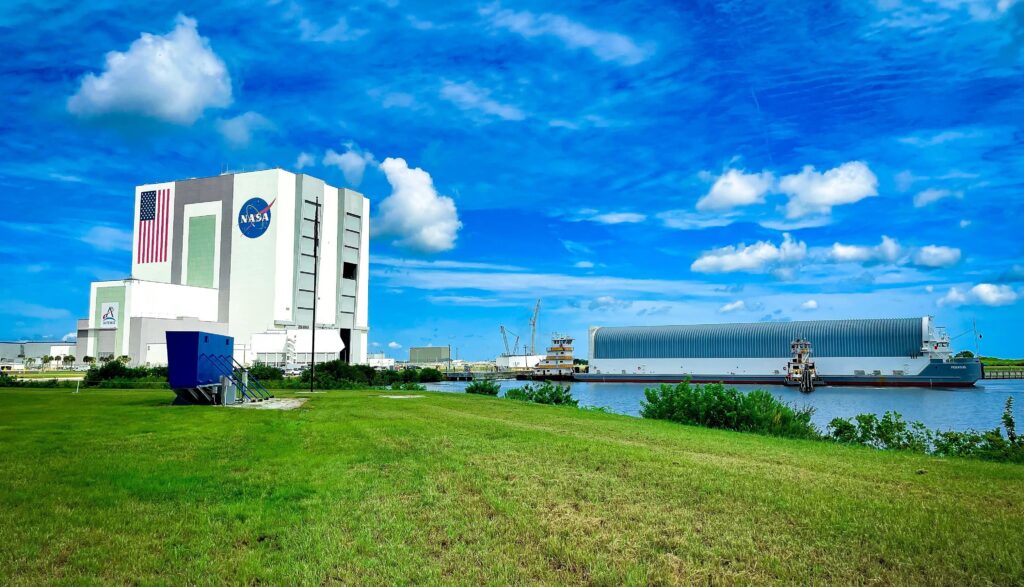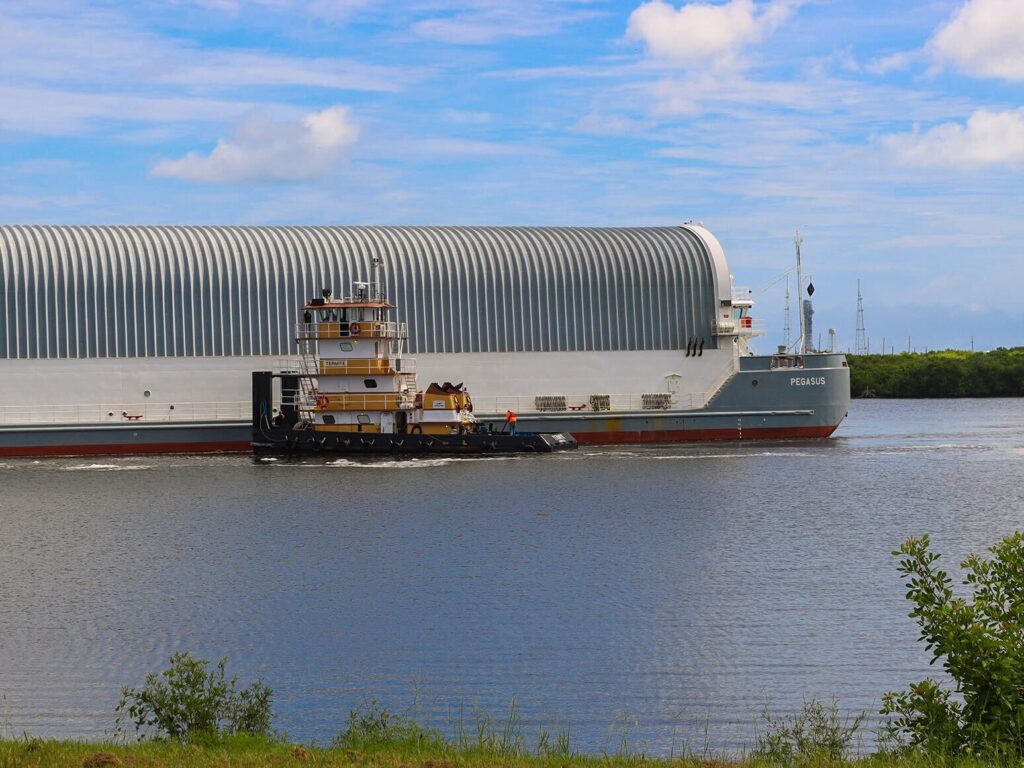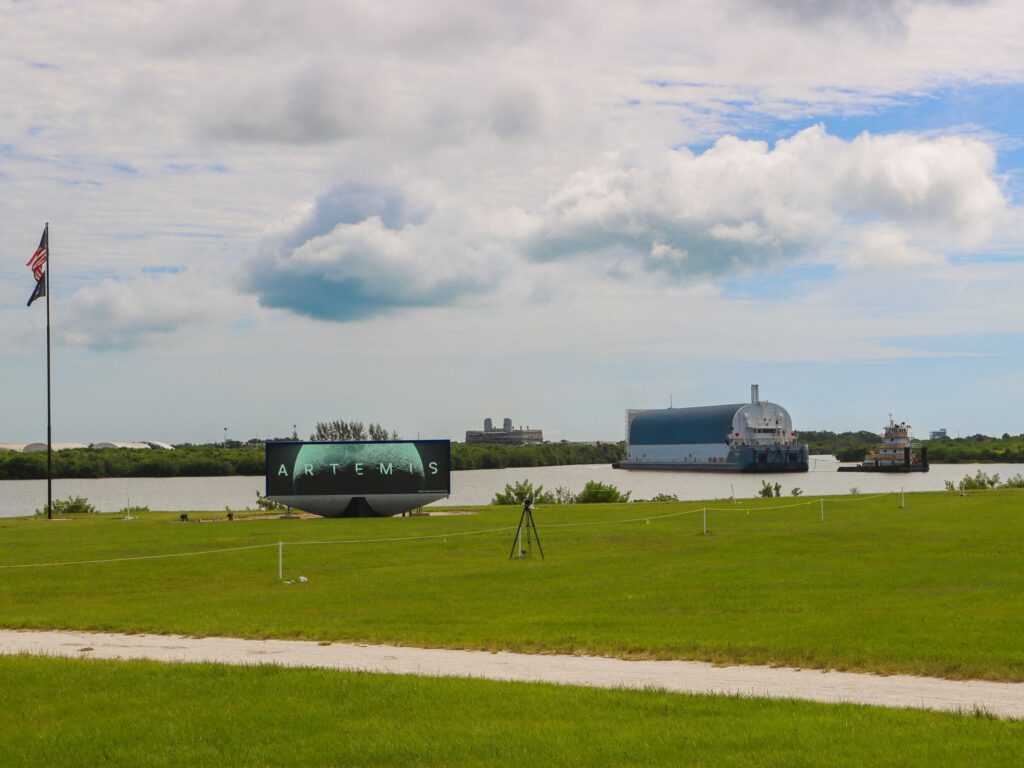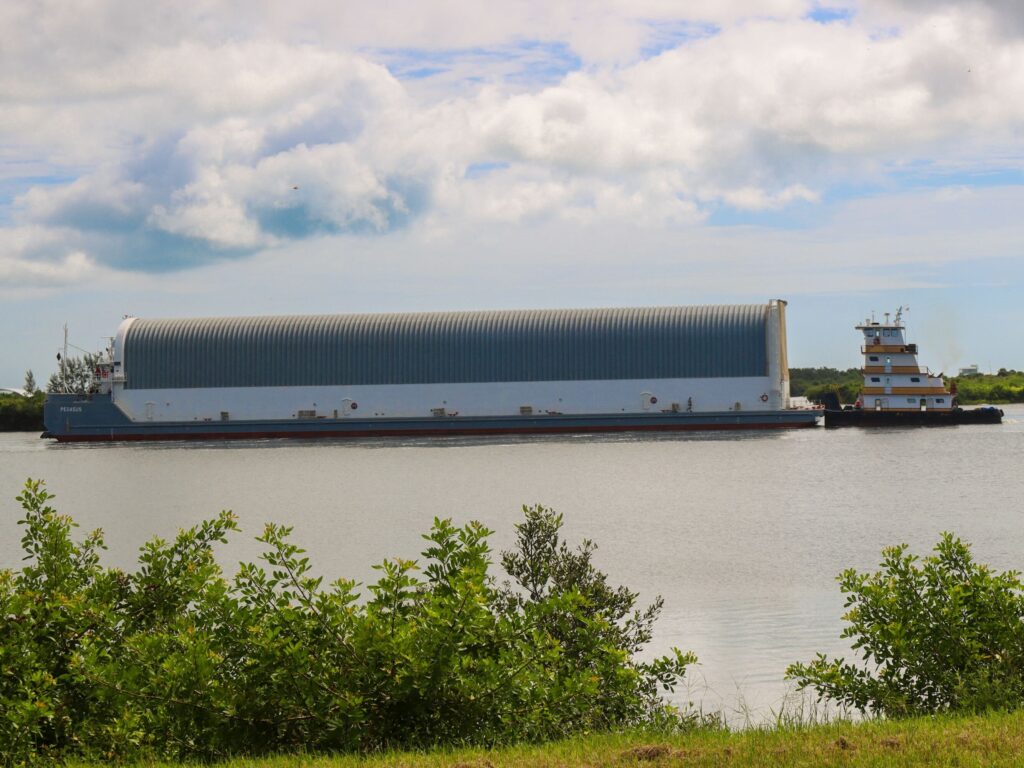
Tuesday morning just at 10:30 a.m., precision was key as two tugboats guided the Pegasus barge into its docking position. The barge carried the core stage for next year’s Artemis II crewed moon mission, a crucial milestone in NASA’s Artemis lunar exploration.

The journey began on July 16 when the Space Launch System (SLS) core stage rocket segment the largest NASA has ever built at 212 feet, sailed from New Orleans’ Michoud Assembly Facility. After traveling 900 miles over a week, it reached Port Canaveral on Monday night.

This 27½-foot diameter rocket core is central to the Artemis II mission, aimed at orbiting the moon. After a week-long journey tp Port Canaveral, it is to be transported to the nearby Rotation, Processing, and Surge Facility. This facility plays a pivotal role in the mission’s preparation, offering specialized environments for the assembly and testing of spacecraft components. Here, technicians and engineers inspect and integrate the rocket core with other segments. They ensure that every part meets the stringent requirements for space travel. This phase is critical as it sets the foundation for the subsequent stages of assembly at the Vehicle Assembly Building. Untimely moving inching closer to the planned launch.

NASA officials gave the media a detailed view of Pegasus’ arrival at the Kennedy Space Center Press Site. The barge, designed in 1999 for space shuttle tanks, highlighted the infrastructure supporting U.S. space efforts.
At the RPSF
Inside the facility, journalists saw the unstacked segments of the rocket’s side boosters, soon to be attached to the Artemis II core. These boosters are crucial for initial lift-off thrust. Stored for now, their lower parts rested in one building, with the white upper segments, featuring NASA’s red logo, in another.
These steps not only drive the Artemis II project forward but also underscore NASA’s dedication to expanding human space presence. Set for a no-earlier-than September 2025 launch from Pad 39B, the mission uses historic and new technologies to open new space frontiers.

